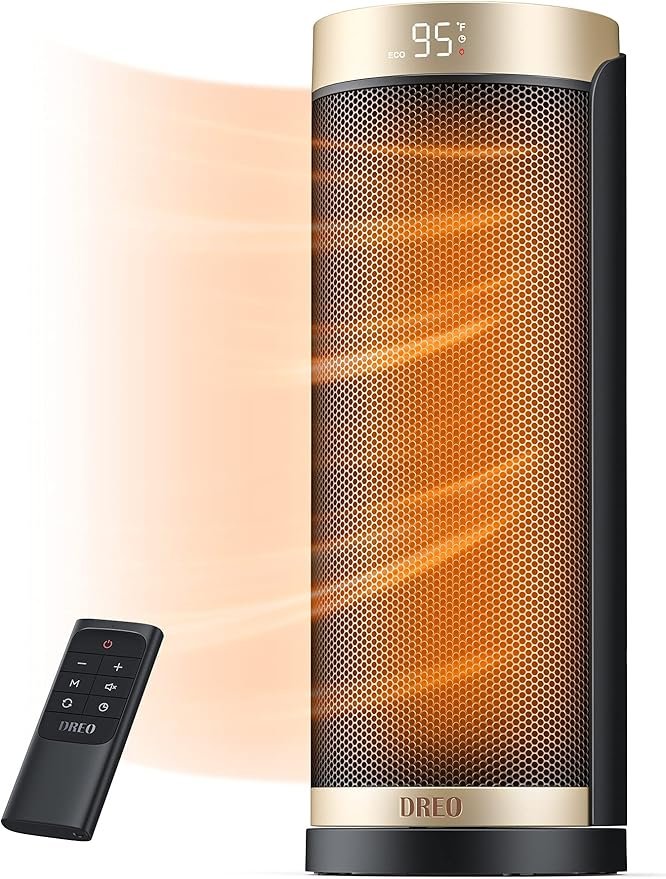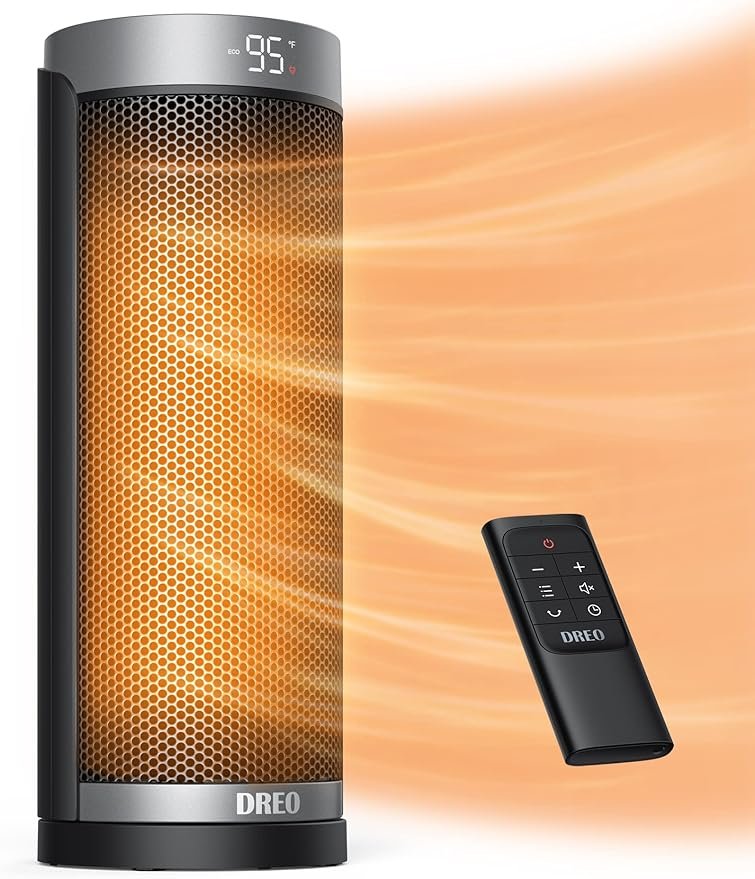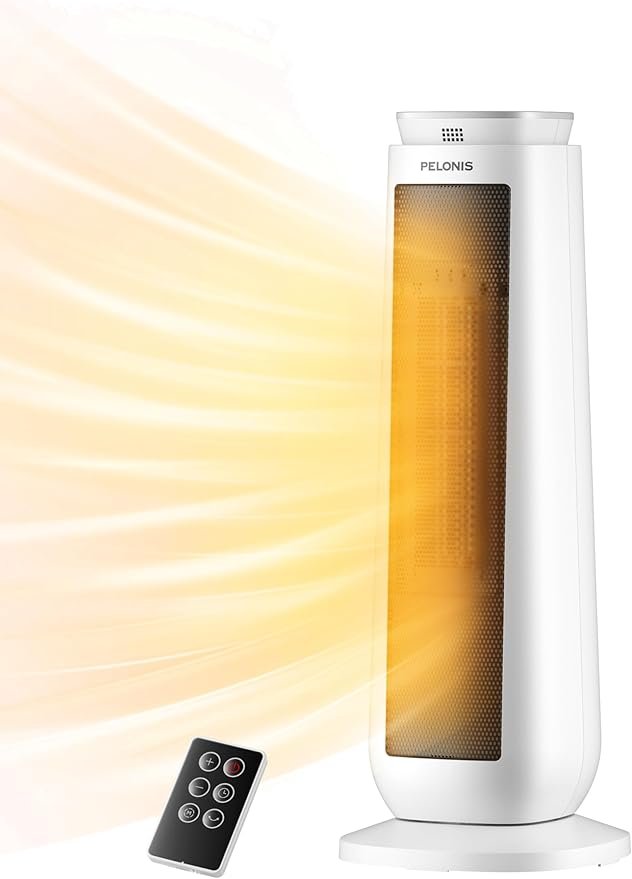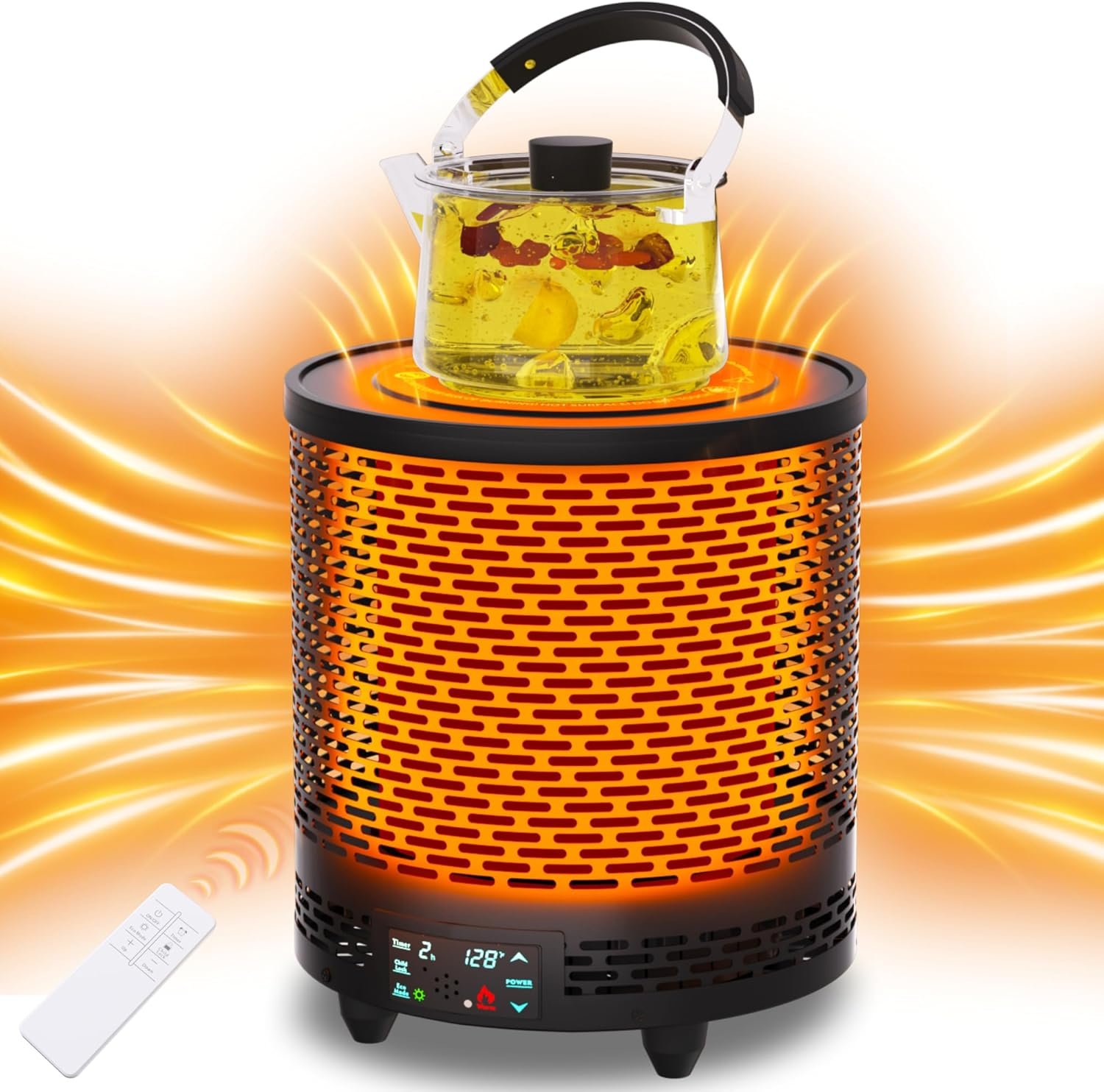Physical Address
304 North Cardinal St.
Dorchester Center, MA 02124
Physical Address
304 North Cardinal St.
Dorchester Center, MA 02124
Dreo Space Heater (1500W PTC Ceramic):
Fast-heating ceramic heater with 70° oscillation and ECO mode.
Quiet at 40dB, built-in safety features, and remote control.
Ideal for bedrooms, offices, or large rooms up to 200 sq.ft.
Dreo Space Heater (Upgraded 1500W):
Silent 37.5dB operation with ObliqueAirflow tech.
70° wide-angle heat spread for rooms up to 270 sq.ft.
Adaptive ECO mode and hidden carry handle for portability.
Pelonis 23” Ceramic Tower Heater:
Energy-efficient ECO mode heats up in 3 seconds.
50dB quiet operation with 8-hour timer.
Slim tower design perfect for bedrooms or living rooms.
Lasko Oscillating Digital Ceramic Tower:
Programmable thermostat with 8-hour auto-off timer.
Widespread oscillation and cool-touch exterior.
Remote storage on the unit to keep it from getting lost.
VPU Voice Control Space Heater:
Voice-activated 360° heating with 0dB noise.
Unique top heating surface (caution: hot!).
Premium safety features and customizable temperature control.
| Product Name | Key Features | Price | Rating |
|---|---|---|---|
| Dreo Space Heater (1500W PTC Ceramic) |
|
$74.99 | 4.5 |
| Dreo Space Heater (Upgraded 1500W) |
|
$74.99 | 4.5 |
| Pelonis 23” Ceramic Tower Heater |
|
$69.99 | 4.4 |
| Lasko Oscillating Digital Ceramic Tower |
|
$85.00 | 4.3 |
| VPU Voice Control Space Heater |
|
$129.99 | 5.0 |

$74.99
Users report it heats bedrooms and offices quickly without noise disruptions. Many highlight the remote’s convenience and consistent temperature maintenance. The compact size gets frequent praise for fitting tight spaces.
Choose the Dreo Space Heater if you need quiet, energy-efficient heating for medium to large rooms. Its combination of safety features (see ceramic heater safety standards), remote control convenience, and 70° oscillation make it ideal for bedrooms/home offices. While not the cheapest option, the ECO mode helps manage long-term costs (learn about ceramic heater electricity use).

Price: $74.99
Rating: 4.5/5
The Dreo Space Heater is the best indoor heater for large rooms under $100.
It’s a no-brainer if you need fast, quiet heating without overspending.
Choose it for bedrooms or living areas where noise matters.

Price: $69.99
Pelonis Tower Heater for quick heating in bedrooms or living rooms.
Ideal for safety-focused households with kids or pets.
Pick this if you want a balance of price and features.

Price: $85.00
Rating: 4.3/5
Users praise how quickly this heater warms nearby spaces and appreciate the slim design. The remote control gets frequent mentions for convenience, though several buyers note it stopped working within months. While many find it reasonably quiet, others mention a noticeable hum during operation.
Best for: People needing whole-room heating with remote access. Go with this if you want safety features and oscillation, but keep receipts handy in case of technical glitches.

Price: $129.99
Rating: 5/5
The VPU Voice Control Space Heater is the best indoor heater for large rooms if you want tech-forward features.
Go for it if you need silent heating, voice control, and rapid warmth.
Skip it if you’re on a tight budget or have young kids (hot surface risk).
Yes – if they’ve got the right safety features.
Look for tip-over protection, overheat sensors, and ETL certification.
The Dreo models auto-shut off after 12-24 hours, so you’re not risking all-night operation.
Key takeaway: Never use extension cords, and keep flammable stuff at least three feet away.
Let’s do the math.
1500W running 8 hours = 12 kWh per day.
At $0.15 per kWh, that’s $1.80 daily.
But: Most people use ECO mode (900W) and timers, cutting costs by 30-50%.
Depends on the model.
The Dreo heaters cover 200-270 sq.ft. thanks to 70° oscillation pushing heat into corners.
Pro tip: Close doors and use ceiling fans to circulate warmth faster.
For bigger spaces, check oil-filled vs ceramic heater comparisons.
Less than most.
Unlike coil heaters, ceramic models don’t scorch airborne moisture.
You’ll still want a humidifier if your skin or sinuses get irritated – but it’s not the heater’s fault.
Ceramic heats the air.
Infrared heats objects and people directly.
Ceramic’s better for steady room warmth; infrared’s ideal for spot heating.
Not sure? Compare noise levels and energy use between the two types.